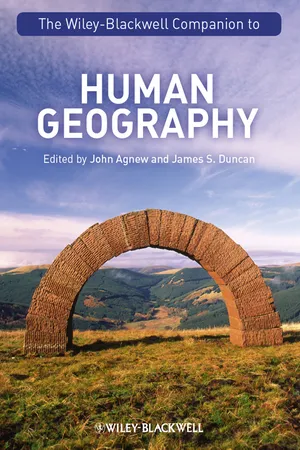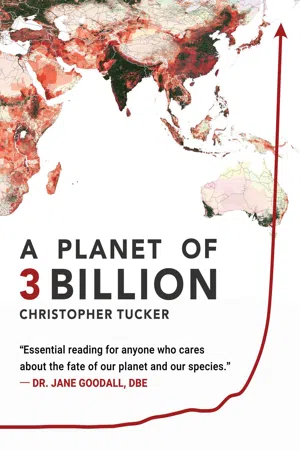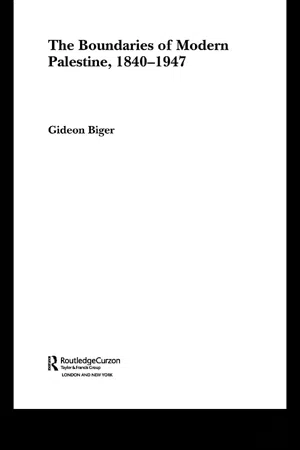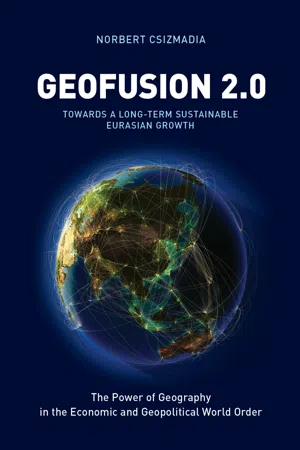Geography
Past and Present Connections
"Past and Present Connections" refers to the historical and contemporary relationships between different places and regions. It encompasses the study of how human activities, such as trade, migration, and cultural exchange, have shaped the interconnectedness of the world over time. Understanding these connections is essential for comprehending the dynamics of globalization, economic development, and cultural diversity.
Written by Perlego with AI-assistance
Related key terms
Related key terms
1 of 4
Related key terms
1 of 3
4 Key excerpts on "Past and Present Connections"
- eBook - ePub
- John A. Agnew, James S. Duncan, John A. Agnew, James S. Duncan(Authors)
- 2011(Publication Date)
- Wiley-Blackwell(Publisher)
Contemporary Approaches , highlighting the ways in which the field is subdivided and how human geography is practiced today by examining a selection of themes with two different perspectives on each, and the operations of its practitioners in education and the larger world. In this final section we do not aim to have authors confront one another but simply offer their own perspectives on the same theme. The purpose is to emphasize divergent interpretations against the tendency to offer interpretations that suggest a general consensus of opinion or a uniform account of what has been happening over the past twenty years or so. We want to show the pluralism of the field at the same time we illustrate the degree to which recent trends draw on and legitimize themselves by reference to historic precursors.Globalization and Human GeographyGlobalization is a buzzword for a world that is seen as increasingly stretched, shrunk, interwoven, integrated, and less state-centered than in the past. It thus typically involves a claim about the changing nature of the world. But it also can involve a parallel claim that this world needs new theoretical tools or modes of understanding. Approximately since the 1970s when the US government’s abrogation of the 1944 Bretton Woods Agreement liberated major world currencies to float freely against one another, tariff barriers to international trade (particularly in manufactured goods) decreased dramatically, as major corporations began to the see the world as “their oyster,” and cultural flows of all sorts started to undermine images of “stability” and “homogeneity” in territorialized national states, past nostrums about social and moral order (typically located at the scale of the national state) have been thrown into question. Particularly significant for a field such as human geography, long sensitive to issues of scale and geographical differentiation, this has proved to be both crisis and opportunity. Often tagged by parallel if somewhat competing terms relating more to the character of theoretical perspectives than to ontological claims about the nature of the world, “postmodernism” and “postcolonialism” are perhaps the most well known, “globalization” has evolved into a complex theoretical notion relating to a significant degree to the overarching question of how cultural and political attachments are actively mediated through space, all the way from the local to the global, and how the complexities of identity in turn affect popular and academic understandings of the world and how it works. It remains contested because of the relative emphasis placed on the source of its “power” and whether it is deployed theoretically more ontologically or epistemologically. So, if the sociologist Ulrich Beck sees globalization as a movement to a totally “new modernity,” the anthropologist James Clifford sees it as an emerging world of enhanced “mobility” both geographical and psychological, and the geographer David Harvey views it as an economic process involving strategies of capital investment made possible by new space-shrinking technologies (Harvey 2006). Clearly, Beck and Clifford would be more likely to make the claim for epistemological “new times” than would Harvey. - eBook - ePub
A Planet of 3 Billion
Mapping Humanity's Long History of Ecological Destruction and Finding Our Way to a Resilient Future | A Global Citizen's Guide to Saving the Planet
- Christopher Kevin Tucker(Author)
- 2019(Publication Date)
- Atlas Observatory Press(Publisher)
The earliest days of modern geography, as is the case with many academic disciplines and professional fields of practice, were often in the service of the national ambitions from which the specific geographers hailed. Geography was not just a body of knowledge or a way of thinking. It was a toolbox of concepts and techniques that allowed for the rigorous accounting of any land that became of interest, opening each particular geography to the practical interests of distant nations and the companies that they nurtured. Dr. Isaiah Bowman, an accomplished academic geographer, once the Executive Director of the American Geographical Society, and a founding Director of the Council on Foreign Relations, used the term “conditional conquest” when describing the practical value that his geographical expeditions had for his own nation.10In this sense, the discipline of geography and its professional counterparts in surveying and topographical engineering were complicit in the developed world’s various colonial, imperial, and globalization projects. The geography of humanity’s footprint, at least as it manifested in the past few centuries, owes much to geographical tools, data, and concepts. That is, the geography of industrialization owes much to geographers, and in a way, the discipline owes a debt to humanity and our planet for so efficiently laying bare Earth’s resources and cultures for exploitation. There is nothing like precise and detailed maps of resources and efficient routes to help move industrialization along.Although we will certainly continue to discuss the geographical history of humanity’s spread and concentration over the past 200,000 years, at this point we will train our attention specifically on the dawn of the Industrial Revolution and the swirl of human activity that it unleashed across our planet over the past three centuries.What kinds of data might be available to help us understand the impacts of the industrialization of our global landscape? It is important to acknowledge that this chapter could be endless were we to account for every single change to Earth’s surface that humans have unleashed at industrial scale. In the interest of brevity, however, we will attempt to provide a rigorous geographical accounting of only five layers of activity. - eBook - ePub
- Gideon Biger(Author)
- 2004(Publication Date)
- Routledge(Publisher)
Introduction The boundary and its role in the historical-political existenceThe state and the boundary
A geographical settled landscape is the most outstanding representation of the human essence. Every settlement, house, city or road is a perceptible expression of the sum of the knowledge, understanding and the human aspirations, and are the clearest characteristic of human activity. Every geographical scene revealed to the eye has been created at a certain point in the past, and is the product of a process that has been carried out and continues to do so, along with time.Geographical and physical elements such as the landscape, earth components, climatic characteristics and the designing human activity that use this and adjust themselves to living in this physical scene are all constituting elements of this process. The settled landscape is therefore a perceptible expression of outlooks, political and ideological struggles, and the technological knowledge and talents that are translated into ways in which man designs his world. The present human geographical landscape is a product of all the processes in which man was involved, during the periods of his existence. The past lives, acts and influences the nature of the present, in its being a part of the essence of human existence. Many human geographic elements that were created in the past no longer exist, and their memory lingers on in the human consciousness, both by descriptions that were written in their time, and by remnants that are revealed to the researcher.The political world, in which we live today, at the onset of the third millennium, consists of over 200 sovereign states, together with a few colonies and protectorates that are separated from one another by international boundaries. The borderline between states is one of the most sensed expressions resulting from the human essence in general, and from political-historical processes in particular. Every boundary is an element of scenery existing, and it influences both its immediate and distant surroundings. This is regional-spatial influence, but also a political-psychological one. A boundary is a product of political and military power and strength that was established in a certain period and it reflects the political balance between the political units that reside on both sides of the line. Every political unit is characterized, among others, by the existence of a sovereign territory. A line that separates it from another sovereign territory bounds this territory, and harming the boundary is equal to harming the existence of the state itself. - eBook - ePub
Geofusion 2.0
The Power of Geography in the Economic and Geopolitical World Order
- Norbert Csizmadia, Bence Gáspár(Authors)
- 2021(Publication Date)
- PublishDrive(Publisher)
CHAPTER 2 The Relationship Between Geography and Geopolitics The Interdisciplinary Relationship Between Geography and Geopolitics The place of geography in the system of sciences Geography once referred solely to the description of Earth; however, by the 20th century, it grew out of the descriptive role and integrated a spatial approach at its frontiers, creating its own subdomains. Nowadays a wide range of sciences, especially social sciences, increasingly turn to geography out of necessity nowadays. New ideas are produced with remarkable intensity in the interdisciplinary fields of economics and geography. The central role played by these geographical features in the development of countries and the global economy is increasingly seen as important in mainstream economic thinking. For example, the rise of geoeconomics, which develops at the intersection of geography, geopolitics, and economics, is due to the realization that development is best explained on a global scale by geographical and historical correlations. The main aim of the book Geography: A Global Synthesis by Peter Haggett, a professor emeritus at the University of Bristol, is to present the whole spectrum of geography in a modern approach. According to him, geography has become a synthetizing science that deals with the spatial context, correlation, distribution, and interrelationships of the social, economic, and environmental processes and phenomena that occur on Earth. Geographical synthesis concerns all branches of geography as well as the neighboring disciplines. Among geographical disciplines, a new fault line was opened with the appearance of regional science in the 20th century. Haggett breaks down the study of geography into five topics
Index pages curate the most relevant extracts from our library of academic textbooks. They’ve been created using an in-house natural language model (NLM), each adding context and meaning to key research topics.
Explore more topic indexes
Explore more topic indexes
1 of 6
Explore more topic indexes
1 of 4



